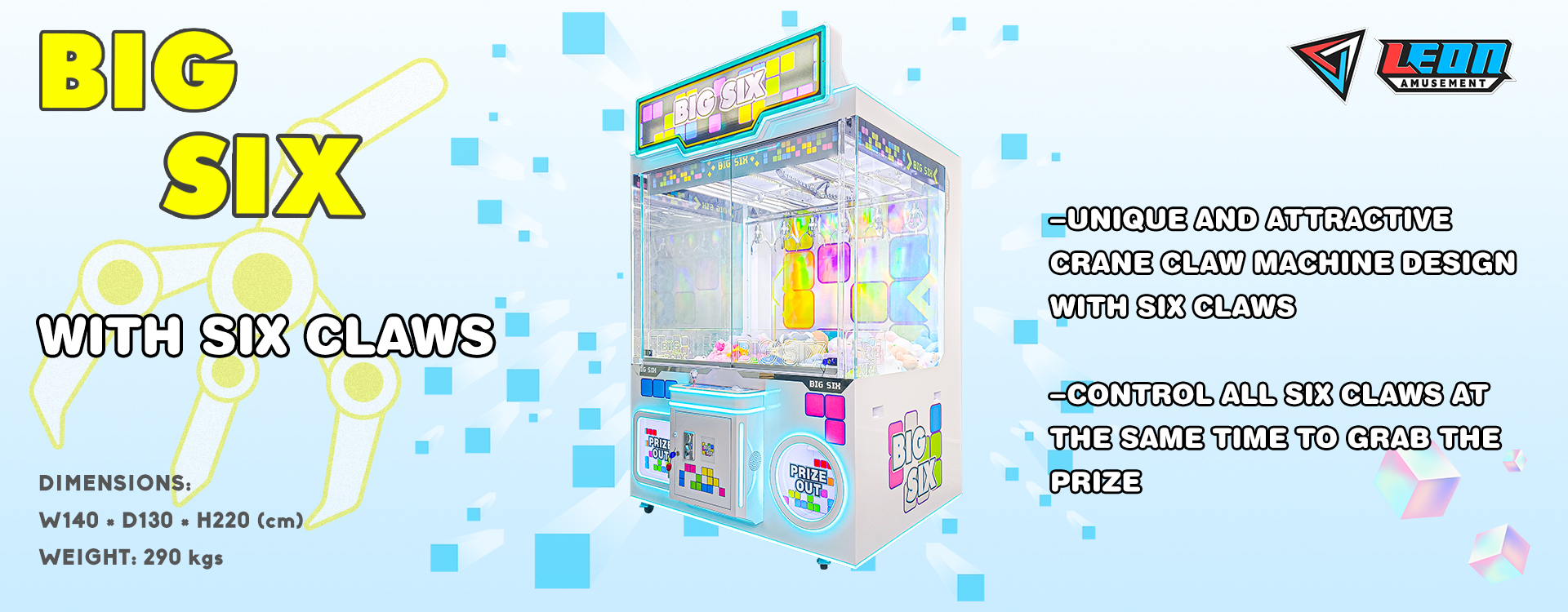Claw machines have different claw sizes depending on the prize. Mini-claws (approximately 5~7 cm width) suitable for small and light toys, a weight of around ~50 to 150g or a gripping force of about ~1-3 kg. These medium claws are 8-12 centimeters in diameter and provide support for items weighing between around 150 grams — a little over an apple or orange (0.5 lb), to approximately half of what we approached above, generally within the range of small birds such as Pigeons until subsisting all through raccoons. Claws with a width of 13-18 cm meant for large game fish weigh over 500 grams and have gripping force from around kilograms and more. By choosing the correct claw size, players can increase their chances of winning prizes.
Table of Contents
ToggleDifferent Sizes of Claws
Small-Sized Claws
The width of small-sized claws between 5 to 7 centimeters is common for tiny prizes (50-150 grams). Step Encoders commonly have a high level of seizing exactness, with 1-3 kg getting power. This is suited to operate in tight areas; however, it may be less likely to succeed because of lower ability gripping force.
Medium-Sized Claws
These mid-size claws are usually 8-12 cm wide and more appropriate for 150 to 500-gram prizes. With a holding force of 3-6 kilograms, these are perfect for most common prizes. They walk a good line between grabbing precision and gripping force, giving them an elevated success rate that makes them viable for most claw machine games.
Large-Sized Claws
Winner claws are 13-18 cm wide and provide prices at around half a kilo to the size of some over a kilogram. They should be able to exert a slip between 6-10 kilograms, which can help them hang on and land heavier catches. These claws are equipped with extra mechanical parts in order to maximize grasp force and stiffness, but they have many joints other than flexibility in working spaces, which reduce the percentage of reaching a task.

Impact of Different Claw Designs
Design Features of Small-Sized Claws
The small claws are designed for targeted actions – they have narrow claw gaps and work best on miniature prizes such as figures or mini toys. Their small contact area necessitates precise alignment and limited forces relative to not allowing the prize to slip or without a bite. The claws on the end could also get a little sharper to help improve its grip.
Design Features of Medium-Sized Claws
Ideal claw widths and depths for a wide range of prices, while the competition-strength gripper holds on tight. It helps stability in grasping claws and could help keep prizes from slipping away. They range in gripping force and can handle a variety of prize weights/sizes with moderate grip. The design may comprise of adjustable gripping arms to change fitting for different prizes.
Design Features of Large-Sized Claws
Large claws are designed to increase gripping power and grab length, often with stronger grip mechanisms or wider claw spacing. They’re strong and can lift big, heavy prizes like those giant stuffed animals you envy. Those larger ones may have less flexibility in tighter spots, with extra mechanisms for grip force and stability at the cost of precision.
Considerations for Choosing Claws
The correct claw selection helps improve game success rates for a claw machine. The first is by the size and weight of your prize. Hence small-sized claws are beneficial as they represent operability and correct clit when you go for a mini toy, figurine kind of prize. But small claws have a weaker pincer, which may not be strong enough to hold heavier prizes. The smaller claws provide the strongest grip and narrowest range, making them more appropriate for picking up one specific item, while medium-sized claws offer a nice middle ground between gripping force. Picking the right claw size against the weight and shape of the prize improves the grab success rate.
When selecting claws, machine design requirements are also critical. The claw size and gripping force depend on the different machines of the arcade. Large-sized claws are all well and good for doing heavy lifting, but they need more skill to control and may not be as useful in tight spots. Taking all these factors one can adjust his game settings and always boost the grabbing performance rate of the player.








